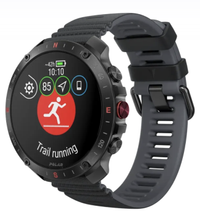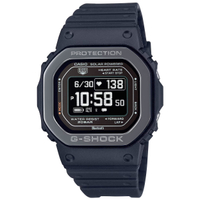I walked 5K+ steps with the G-Shock Move and Polar Grit X2 Pro— here's the winner
Which rugged smartwatch wins our G-Shock Move vs. Polar Grit X2 Pro showdown?
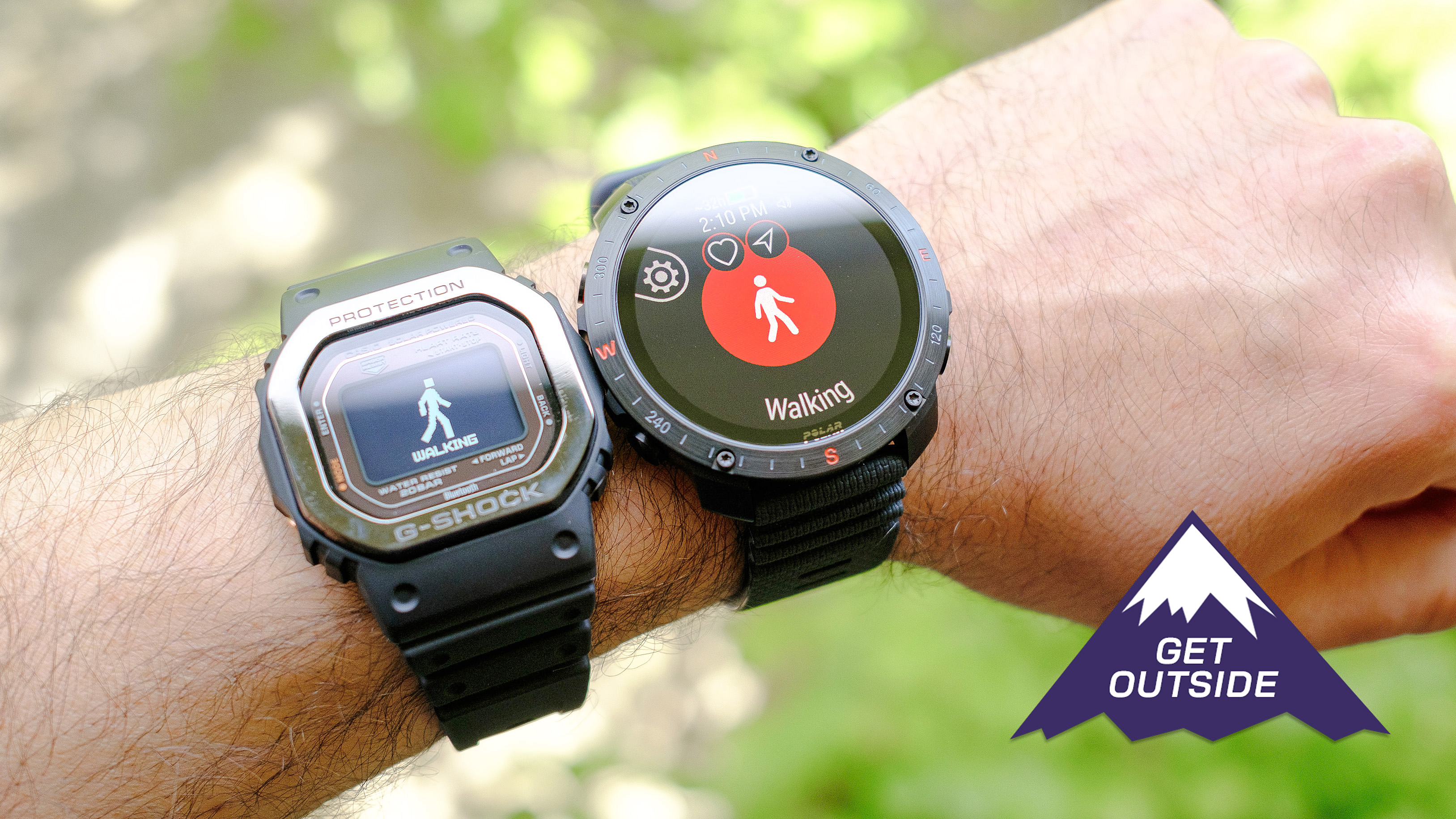
If you're on the hunt for a rugged smartwatch that's built to survive life's hard knocks, there's a good chance you've come across the Polar Grit X2 Pro or G-Shock Move DWH5600.
Both devices perform the fitness basics, like keeping tabs on heart rate, calories, steps and more. Both also monitor blood oxygen levels, track sleep quality and stress levels, provide insights into training recovery and sync with your smartphone to send notifications.
Of course, the Polar Grit X2 Pro is slightly more than double the price of the G-Shock Move. With a built-in multiband GPS, altimeter and support for a huge number of sports profiles, Polar's device is a full-blown adventure-ready smartwatch.
The G-Shock Move, on the other hand, marries Casio's classic 1980s digital watch design with modern tech, making it a capable fitness tracker disguised as a retro-fabulous wristwatch.
Users can only track a small number of physical activities with the G-Shock Move — I'm still waiting on support for biking — and there's no onboard GPS or altimeter, you'll need to have a paired smart device (your phone) for that. Still, the G-Shock boasts 200 meters of water resistance compared to the Polar's 100 meters, supports solar charging and wears more comfortably — at least, on my wrist.
Polar Grit X2 Pro vs. G-Shock Move: Step count test
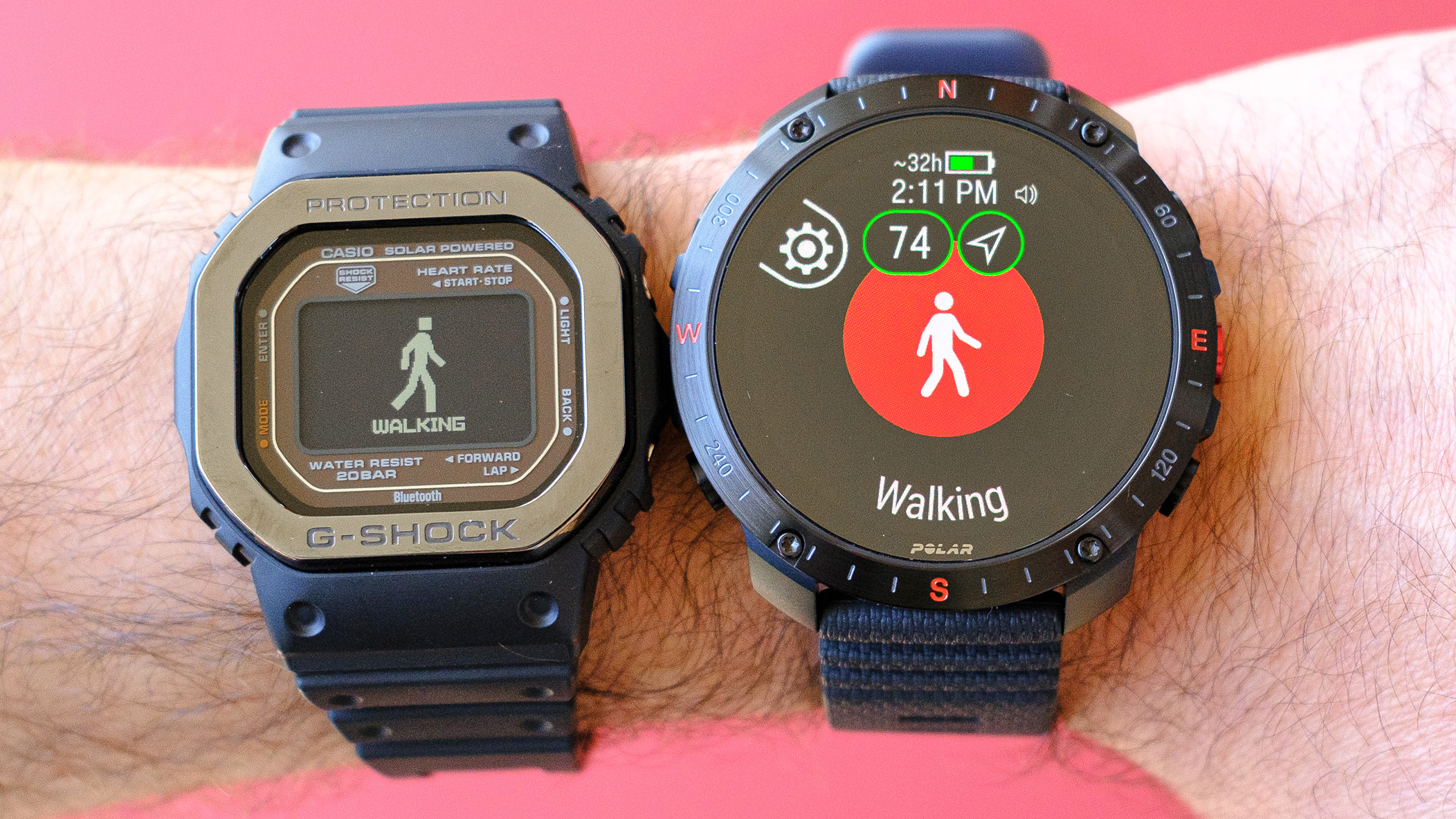
With walking being one of the four physical activities users can track on the G-Shock Move DWH5600 — the others are running, interval training and "gym workouts" — I decided to test its accuracy against the Polar Grit X2 Pro, which is the newest smartwatch to cross my desk.
In previous head-to-head step count battles, the G-Shock has proven to be a tough opponent — it even beat the Apple Watch SE. However, as noted, the Grit has a lot more onboard tracking tech than the Move. To make up for this, the latter pairs with your smartphone and borrows its location data.
Hardware aside, both of these devices are making use of Polar's software — Casio licenses the technology for its entire "Move" line of fitness-focused smartwatches.
Polar Grit X2 Pro: $749 @ Polar
The Grit X2 pro is Polar's newest GPS smartwatch for outdoor adventures. It features a large, immersive AMOLED touchscreen and stainless steel case and bezel, making it tough-built and delightful to interact with. Moreover, the Grit X2 Pro is jam-packed with fitness-tracking tech and supports a huge number of physical activities.
G-Shock Move DWH5600: $299 @ REI
This tough-built, sporty watch looks straight out of the 1980s in all the best ways. However, it packs the features of a modern smart wearable, including basic activity tracking, blood oxygen saturation monitoring, smartphone notifications and more. It also boasts better water resistance than even the Apple Watch Ultra.
So, which one more accurately tracks steps? To find out, I set off on another gorgeous Seattle afternoon and explored the sights, sounds and smells (the flowers are popping) of my neighborhood and those around it. I wore the Polar on my left wrist and the G-Shock on my right.
To keep track of my total step count, as always, I manually counted each and every step up to 100 before clicking my old-timey tally counter and starting back over at one. Here's how the results from these two watches compare after 5,800 steps.
Polar Grit X2 Pro vs. G-Shock Move: Step count test results
| G-Shock Move DWH5600 | Polar Grit X2 Pro | Control | |
| Steps | 5,818 steps | 5,956 steps | 5,800 steps (manual count) |
| Distance | 2.72 miles | 2.96 miles | 2.95 miles (Google Maps) |
| Elevation gain | n/a | 340 feet | n/a |
| Average Pace | 20 mins, 52 secs per mile | 19 mins, 20 secs per mile | n/a |
| Average heart rate | 130 bpm | 122 bpm | n/a |
| Max heart rate | 171 bpm | 169 bpm | n/a |
| Calories burned | 321 calories | 561 calories | n/a |
The G-Shock Move once again proved itself to be a supremely accurate step count tracker, missing my actual total by a mere 18 steps. The Polar meanwhile, also did a great job, overcounting by 156 steps, which I consider small potatoes.
Both devices spat out similar distance measurements, too, though the Polar is closer to Google's. It's worth pointing out that this walk involved a considerable amount of ascent, which is not reflected in the G-Shock's data — 340 feet of elevation gain is roughly equivalent to 34 flights of stairs climbed, which ain't nothing.
Moving down the chart, the Grit recorded a slightly faster pace than the Move, which makes sense given that the Polar thought I walked further than the G-shock in roughly the same amount of time.
Judging by past walking tests, the Polar's average heart rate strikes me as a tad low, whereas the G-Shock's seems on the money. Regardless both calculated similar maximum heart rates, even if the Grit X2 Pro felt I burned more calories.
Polar Grit X2 Pro vs. G-Shock Move: G-Shock wins
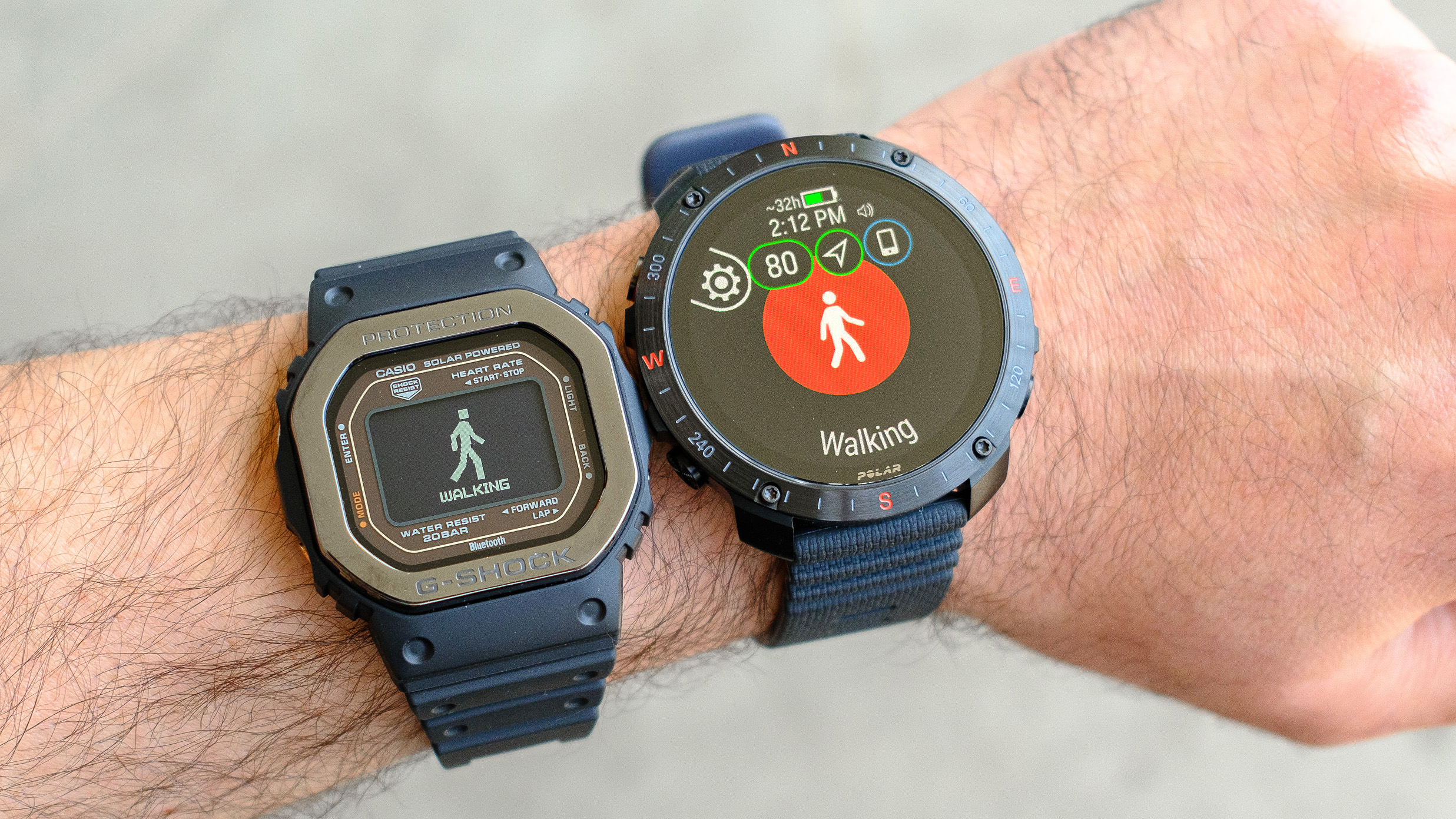
For this step count challenge, the G-Shock Move DWH5600 beats the Polar Grit X2 Pro. However, that doesn't necessarily mean it's the better fitness tracker. Both captured fairly accurate data but only the Polar captured my ascent, which for this walk, was noteworthy.
Ultimately, the best fitness tracker is the one you actually wear consistently. And, depending on your needs and desires, either of these devices might serve you well.
The Polar is a better choice for those who want to track a wide range of sports and activities and dive deep into insights. The G-Shock is optimal for more casual users wishing to monitor physical activity and well-being more generally.
For even more options, read our guide to the best fitness trackers and best smartwatches available right now.
More from Tom's Guide
Sign up to get the BEST of Tom's Guide direct to your inbox.
Get instant access to breaking news, the hottest reviews, great deals and helpful tips.

Dan Bracaglia is the Tom’s Guide editorial lead for all things smartwatches, fitness trackers and outdoor gear. With 15 years of experience as a consumer technology journalist testing everything from Oura Rings to instant cameras, Dan is deeply passionate about helping readers save money and make informed purchasing decisions. In the past year alone, Dan has assessed major product releases from the likes of Apple, Garmin, Google, Samsung, Polar and many others.
An avid outdoor adventurer, Dan is based in the U.S. Pacific Northwest where he takes advantage of the beautiful surroundings every chance he gets. A lover of kayaking, hiking, swimming, biking, snowboarding and exploring, he also makes every effort to combine his day job with his passions. When not assessing the sleep tracking and heart rate accuracy of the latest tach gadgets, you can find him photographing Seattle’s vibrant underground music community.
